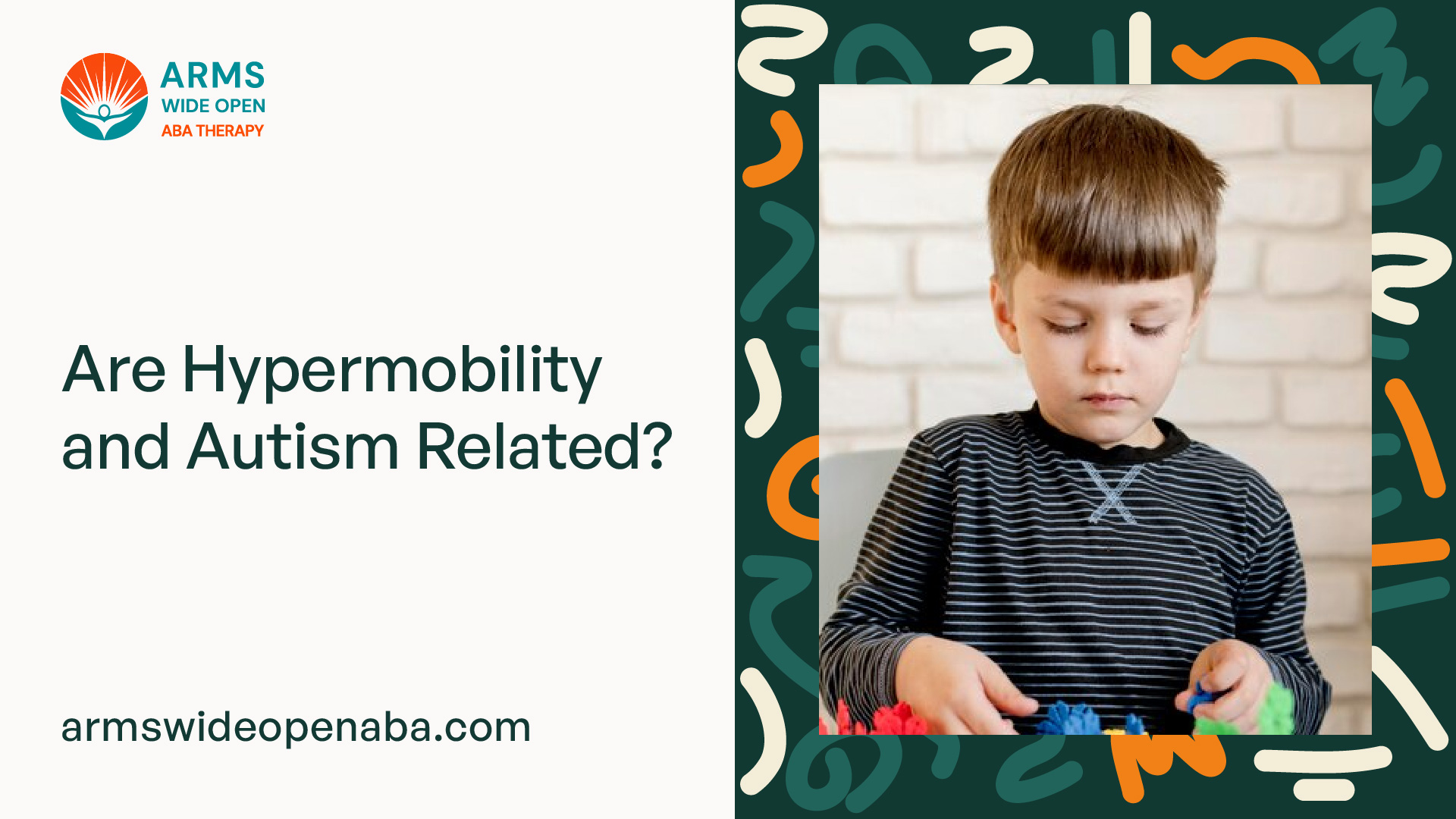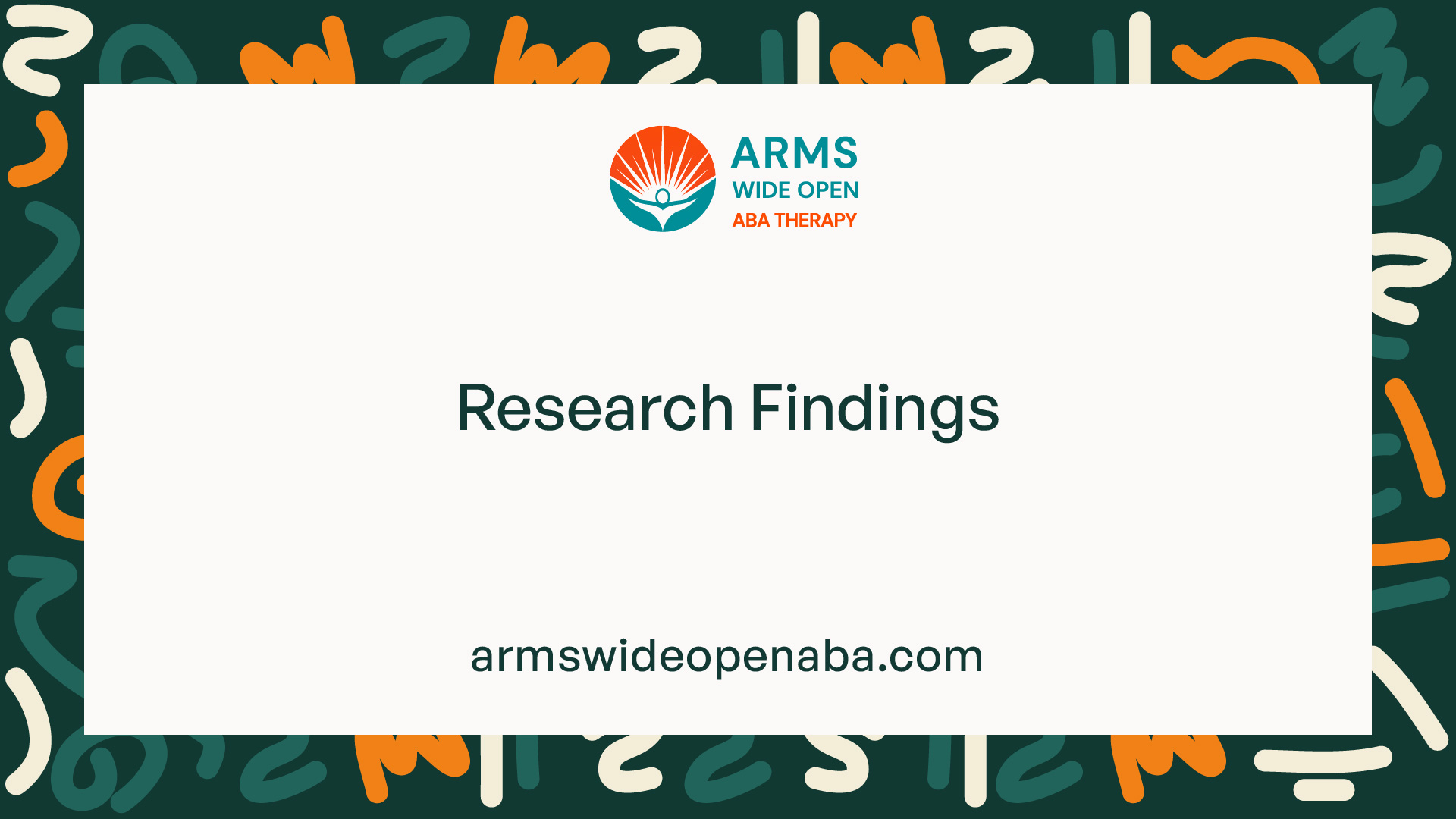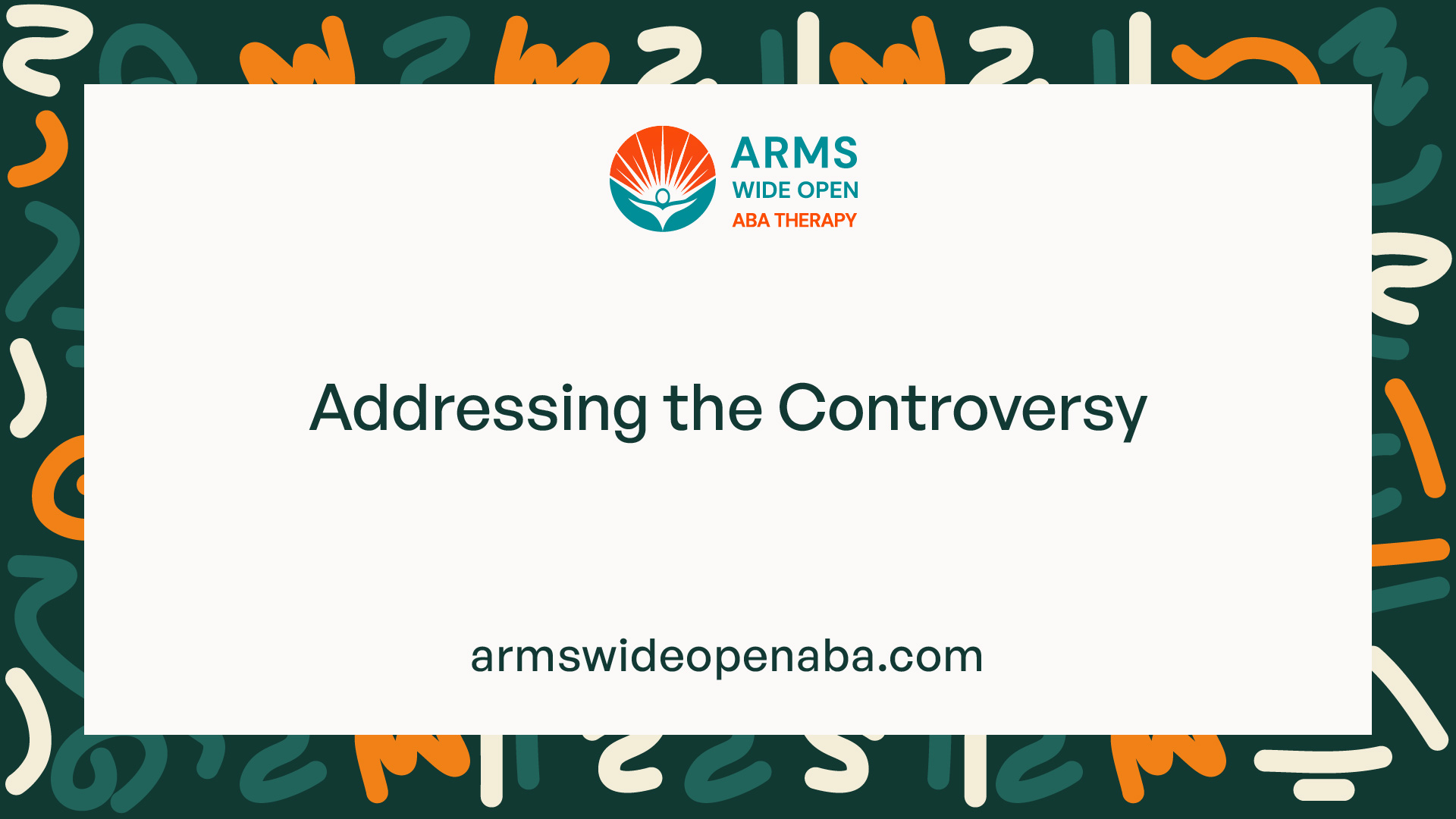Are Hypermobility and Autism Related?
Discover the truth about the link between hypermobility and autism. Unraveling the puzzle to shed light on potential connections.


Understanding Hypermobility and Autism
In order to explore the potential link between hypermobility and autism, it is important to first understand the definitions of these two conditions and how they may be related.
Defining Hypermobility
Hypermobility refers to an increased range of motion in the joints beyond what is considered normal. This flexibility is often seen in individuals who can bend their joints further or perform movements that others cannot. Hypermobility is typically assessed using the Beighton Score, which evaluates the range of motion in various joints.

A score of 4 or more out of 9 is generally considered indicative of hypermobility.
Defining Autism
Autism, or Autism Spectrum Disorder (ASD), is a neurodevelopmental disorder that affects social interaction, communication, and behavior. It is typically diagnosed based on specific criteria outlined in the Diagnostic and Statistical Manual of Mental Disorders (DSM-5). The symptoms of autism can range from mild to severe and may include difficulties with social interactions, repetitive behaviors, and sensory sensitivities.
Exploring the Potential Link
While the exact relationship between hypermobility and autism is still being investigated, there is evidence to suggest a potential association. Some studies have found a higher prevalence of hypermobility in individuals with autism compared to the general population. However, it is important to note that not all individuals with hypermobility have autism, and vice versa.
Understanding the potential link between hypermobility and autism is complex, as both conditions are multifaceted and can have various underlying causes. Further research is needed to fully understand the relationship between these two conditions and to identify any shared genetic factors, commonalities, or differences.
By exploring the definitions of hypermobility and autism, we can begin to unravel the puzzle and gain insights into the potential link between these two conditions. Continued research will help us better understand the connection and provide support for individuals who may be affected by both hypermobility and autism.

Research Findings
To better understand the potential relationship between hypermobility and autism, researchers have conducted various studies to investigate the prevalence and commonalities between these two conditions. These research findings shed light on the complex nature of the connection and provide insights into the similarities and differences observed.
Studies on Hypermobility and Autism
Several studies have explored the association between hypermobility and autism. These studies have examined the prevalence of hypermobility in individuals with autism and vice versa. While the results have been varied, some studies have suggested a higher prevalence of hypermobility in individuals with autism compared to the general population.

It is important to note that these studies have limitations, such as small sample sizes, differences in assessment methods, and varying diagnostic criteria. As a result, further research is needed to establish a conclusive link between hypermobility and autism.
Commonalities and Differences
While hypermobility and autism may share some commonalities, they also exhibit distinct characteristics. Both conditions are believed to have a genetic component, with certain genes potentially contributing to the development of both hypermobility and autism.
However, there are notable differences between hypermobility and autism. Hypermobility primarily affects the musculoskeletal system, leading to increased joint flexibility and often accompanied by joint pain or instability. On the other hand, autism is a neurodevelopmental disorder characterized by challenges in social interaction, communication difficulties, and restricted or repetitive behaviors.
Despite these differences, some individuals may present with both hypermobility and autism, suggesting a potential overlap in certain cases. The co-occurrence of these conditions warrants further investigation to better understand the underlying mechanisms and potential shared genetic factors.
Research findings provide valuable insights into the relationship between hypermobility and autism. While studies have shown a higher prevalence of hypermobility in individuals with autism, further research is needed to establish a definitive link. Understanding the commonalities and differences between these conditions can contribute to improved diagnosis, treatment, and support for individuals experiencing both hypermobility and autism.
Possible Connections
While the relationship between hypermobility and autism is complex and still not fully understood, researchers have explored potential connections between the two conditions. Two areas of interest that have emerged are shared genetic factors and the impact on motor skills and development.
Shared Genetic Factors
Studies have suggested that there may be shared genetic factors between hypermobility and autism. Genetic variations and mutations have been identified in both conditions, indicating a possible underlying genetic link. However, it's important to note that not all individuals with hypermobility will have autism, and vice versa. The relationship between the two conditions is likely influenced by a combination of genetic and environmental factors.
To better understand the potential genetic connections, researchers have conducted studies comparing the genetic profiles of individuals with hypermobility, autism, and those with both conditions. These studies have identified specific genes and genetic variations that may contribute to the development of both hypermobility and autism. However, more research is needed to fully elucidate the genetic mechanisms at play.
Impact on Motor Skills and Development
Hypermobility and autism can both impact motor skills and development, which may contribute to the observed overlap between the two conditions. Hypermobility is characterized by increased joint mobility and flexibility, which can affect fine and gross motor skills. Similarly, individuals with autism often experience challenges with motor coordination and may display motor skill delays or deficits.
The impact on motor skills and development may be one of the areas where hypermobility and autism intersect. It is possible that the joint laxity associated with hypermobility affects motor control and coordination, leading to difficulties in individuals with autism. However, the exact nature of this relationship requires further investigation.
To gain a better understanding of the impact on motor skills, researchers have conducted studies assessing motor abilities in individuals with hypermobility, autism, and those with both conditions. These studies have provided insights into the potential motor impairments that may be present in these individuals. However, it's important to note that not all individuals with hypermobility or autism will experience motor difficulties, highlighting the variability within each condition.
The possible connections between hypermobility and autism, including shared genetic factors and the impact on motor skills and development, offer avenues for further research and exploration. By better understanding these connections, researchers can contribute to the development of targeted interventions and support strategies for individuals with both conditions.

Addressing the Controversy
As the relationship between hypermobility and autism continues to be explored, there are ongoing debates within the medical community regarding the true nature of their connection. In this section, we will delve into these debates and consider the implications for future research.
Debates in the Medical Community
The potential link between hypermobility and autism has sparked discussions and differing opinions among medical professionals. Some argue that the observed association between the two conditions is coincidental, and that any apparent connection is a result of overlapping symptoms rather than a true causal relationship.
Critics of the hypermobility-autism link argue that hypermobility is a common trait found in the general population and can be observed in individuals without autism. They suggest that the presence of hypermobility in individuals with autism may simply be a coincidence, without any direct relationship between the two conditions.
On the other hand, proponents of the hypermobility-autism link argue that there is evidence to support a shared underlying genetic basis. They point to studies that have found a higher prevalence of hypermobility in individuals with autism compared to the general population. Additionally, they highlight the presence of commonalities in motor skills difficulties and developmental delays between the two conditions.
Considerations for Future Research
To further understand the relationship between hypermobility and autism, future research should address several key considerations. This will help to clarify the existing controversies and provide a more comprehensive understanding of the potential connection.
- Large-scale studies: Conducting large-scale studies involving diverse populations would provide a more representative sample and help establish the prevalence of hypermobility in individuals with autism.
- Longitudinal studies: Long-term studies tracking the development and progression of hypermobility and autism in individuals from childhood to adulthood would provide valuable insights into the nature of their relationship and potential causal factors.
- Genetic research: Investigating shared genetic factors and examining specific genes and genetic variations associated with both hypermobility and autism could shed light on the underlying mechanisms that contribute to the observed link.
- Motor skills assessment: Assessing motor skills and developmental milestones in individuals with hypermobility and autism, along with control groups, would provide a clearer picture of the similarities and differences between the two conditions.
- Neurological investigations: Exploring the neurological aspects of hypermobility and autism through neuroimaging techniques may help identify any common brain abnormalities or patterns that could contribute to their association.
By addressing these considerations, future research can provide a more comprehensive understanding of the relationship between hypermobility and autism. This will contribute to improved diagnosis, treatment, and support for individuals with these conditions, as well as inform the development of targeted interventions to address their specific needs.
Implications and Support
As we delve into the potential link between hypermobility and autism, it's important to consider the implications and support available for individuals who may be affected by both conditions. Understanding treatment and management strategies, as well as the support available, can greatly contribute to the overall well-being of individuals with hypermobility and autism.
Treatment and Management Strategies
When it comes to addressing hypermobility and autism, a multimodal approach is often adopted to cater to the unique needs of each individual. Treatment and management strategies may include:
- Physical Therapy: Physical therapy plays a crucial role in managing hypermobility and supporting overall motor development. Therapists can work with individuals to improve strength, stability, and coordination. They may also provide guidance on joint protection techniques to minimize the risk of injury.
- Occupational Therapy: Occupational therapy focuses on enhancing daily living skills and promoting independence. Occupational therapists can help individuals develop strategies to improve fine motor skills, sensory processing, and self-care abilities.
- Speech and Language Therapy: Communication challenges are common in individuals with autism. Speech and language therapy can improve speech, language, and social communication skills. Therapists may also address sensory issues that can impact speech and language development.
- Behavioral Interventions: Behavioral interventions, such as Applied Behavior Analysis (ABA), can be beneficial in managing challenging behaviors associated with autism. These interventions aim to teach and reinforce positive behaviors while minimizing negative behaviors.
- Individualized Education Plans: For children and adolescents with hypermobility and autism, individualized education plans (IEPs) can help tailor educational strategies to meet their unique learning needs. This may include accommodations, modifications, and specialized support in the educational setting.
- Medical Management: In some cases, medical management may be necessary to address specific symptoms or comorbid conditions associated with hypermobility and autism. This may involve working closely with healthcare professionals to develop a comprehensive treatment plan.
Support for Individuals with Hypermobility and Autism
Support from various sources can make a significant difference in the lives of individuals with hypermobility and autism. Here are some avenues of support:
- Family and Community Support: The support and understanding of family members, friends, and the community play a crucial role in providing a nurturing environment for individuals with hypermobility and autism. This support can include emotional support, advocacy, and creating inclusive social opportunities.
- Support Groups: Joining support groups can provide individuals and their families with a platform to connect with others facing similar challenges. These groups offer a safe space for sharing experiences, exchanging information, and finding support.
- Specialized Services: Accessing specialized services, such as respite care, assistive technology, and social skills training programs, can provide much-needed support to individuals with hypermobility and autism. These services are designed to cater to their specific needs and promote their overall well-being.
- Educational Support: Collaborating closely with educators and school staff can ensure that appropriate accommodations and support are in place within the educational setting. This collaboration can foster a positive and inclusive learning environment for individuals with hypermobility and autism.
By embracing a comprehensive approach that combines treatment, management strategies, and support, individuals with hypermobility and autism can lead fulfilling lives. It's important to work closely with healthcare professionals, therapists, educators, and support networks to tailor interventions and support according to the unique needs of each individual.
Sources
https://www.,autismparentingmagazine,.com/hypermobility-related-autism/
https://www.ncbi.nlm.nih.gov/pmc/articles/PMC8861852/
Similar articles
We’re here to help you

Our team is here to assist you in this process. Contact us for any assistance.
it’s easy to apply
We Accept Most Insurances
Our in-network insurance partnerships make ABA therapy more accessible to families throughout our service areas.







Our Insurance Process
We'll request your insurance details to help us verify your plan's coverage for ABA therapy. Once we've received this information, we'll walk you through your benefits, including copayments, deductibles and out-of-pocket maximums, so you know what to expect in advance.
Our team will then handle the preauthorization and all the necessary paperwork.
.svg)





















.jpeg)


































.jpeg)




.jpeg)







.jpeg)











.jpeg)
















